Introduction: Rethinking Access to Sarawak’s Hidden Gems
Sarawak’s tourism landscape is blessed with extraordinary ecological wealth and cultural depth its biodiverse national parks and tradition-rich rural communities. Yet, many of these treasures remain physically and logistically out of reach for a large portion of potential visitors.
Poor infrastructure and limited accessibility continue to hamper the development of rural tourism. Many remote sites lack adequate transport connections, signage, or visitor facilities, discouraging travel from beyond the most adventurous tourists.
These areas also face stiff competition from better-equipped urban and resort destinations elsewhere in Malaysia, which often dominate the tourism spotlight due to superior marketing and infrastructure.
The challenge is compounded by the lack of diverse, engaging experiences at some rural attractions. While places like Kubah National Park boast rich natural offerings, they are often limited in cultural programming or interactive elements that could enhance visitor engagement and satisfaction.
Most of Sarawak’s natural attractions, including protected forests, gazetted parks, and nature reserves are located in remote or sensitive environments. This creates a further barrier for tourists with mobility issues, health limitations, or tight travel itineraries.
In recent years, concerns have also emerged over environmental degradation at popular sites. Combined with limited public awareness about sustainable tourism practices, this raises questions about how best to preserve these sites while still making them accessible and engaging.
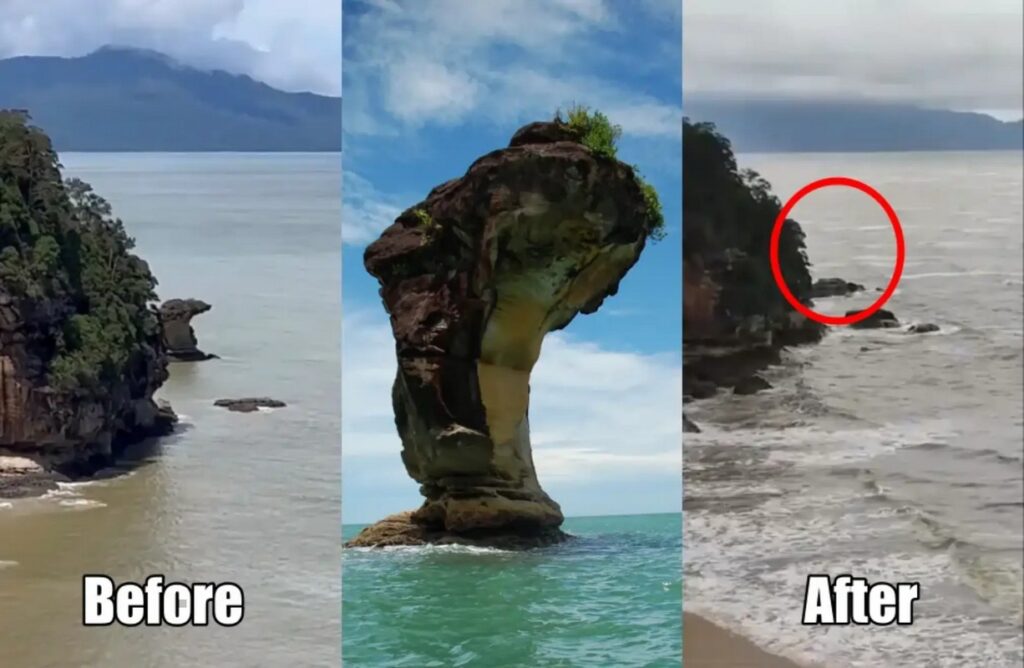
The urgency for alternative tourism models became especially evident during the COVID-19 pandemic, when public health concerns and movement restrictions brought global travel to a standstill.
In Sarawak, monthly tourist arrivals plummeted from 361,334 in January 2019 to just 72,000 in 2022 — a drop of nearly 80%. Although arrivals began recovering to 352,982 by January 2024, the episode underscored a growing global interest in safer, more flexible, and more inclusive forms of travel.
At the heart of this rethinking lies a new digital frontier. One where immersive technologies like Virtual Reality (VR) and Augmented Reality (AR) may hold the key to making tourism more inclusive, engaging, and sustainable.
Can VR and AR Bridge the Tourism Gap?
As Sarawak’s tourism sector seeks sustainable ways to revive and reimagine its future, immersive technologies like VR and AR are emerging as powerful solution tools. By addressing the specific constraints of rural tourism, these technologies could unlock new forms of accessibility, enrich cultural engagement, and ease pressure on delicate natural sites.
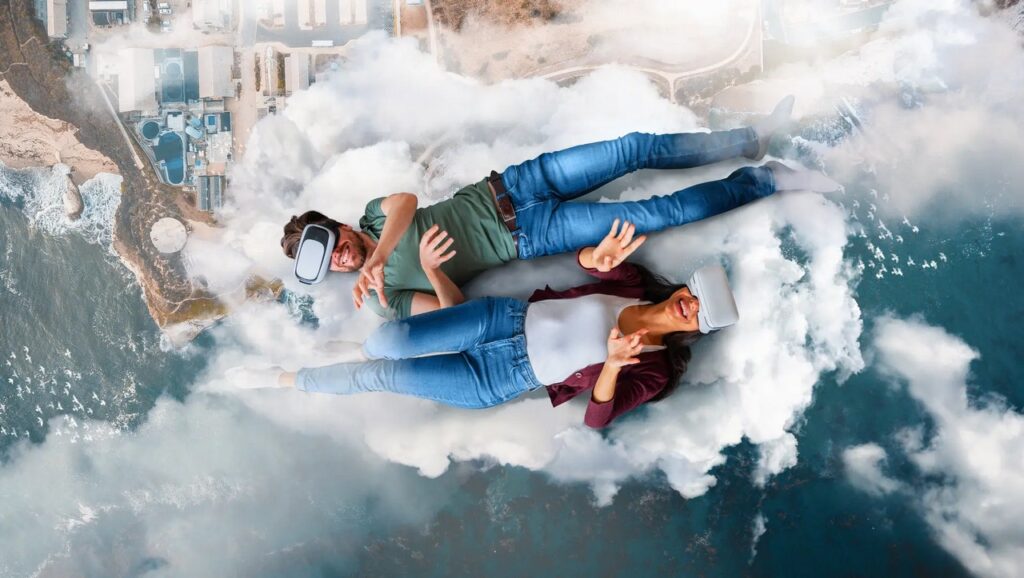
1. Making the Inaccessible Accessible
VR is able to virtually transport users to remote areas. From the comfort of their homes, potential tourists can preview jungle treks, river safaris, or traditional village life in places they might never have considered visiting. These previews may inspire future travel by helping travellers assess whether the experience matches their physical ability or interests.
Meanwhile, AR offers on-the-ground guidance for those who make the journey. With features such as real-time navigation, translation, and contextual tips, AR-enabled apps can help visitors feel more confident and self-sufficient, even in rural areas with limited signage or infrastructure.
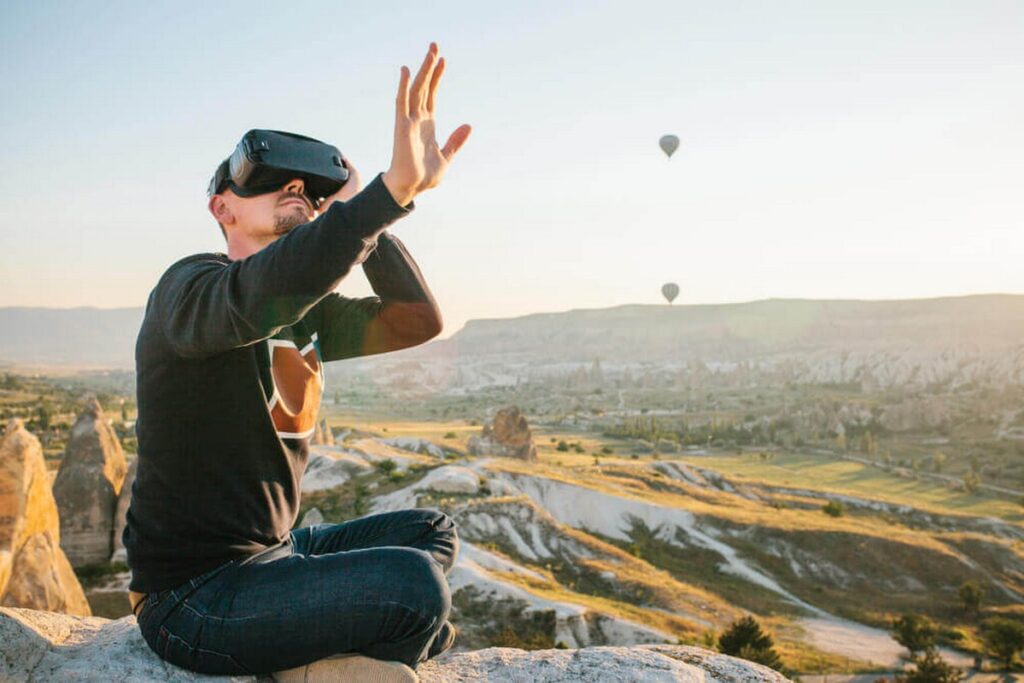
2. Deepening Cultural and Natural Engagement
VR and AR immerse the user. A virtual experience of a traditional Iban longhouse, for example, could include interactive stories, sounds, and crafts, giving viewers a richer understanding of cultural practices than a static display could.
Similarly, AR can bring natural sites to life by layering information onto the real world: a walk through a rainforest can become a guided eco-tour, with insights about medicinal plants, endemic species, or indigenous ecological knowledge revealed through a smartphone or wearable device.
Such enhancements increase the depth of engagement, especially among younger, tech-savvy visitors, and allow tourism providers to extend storytelling without building new infrastructure.
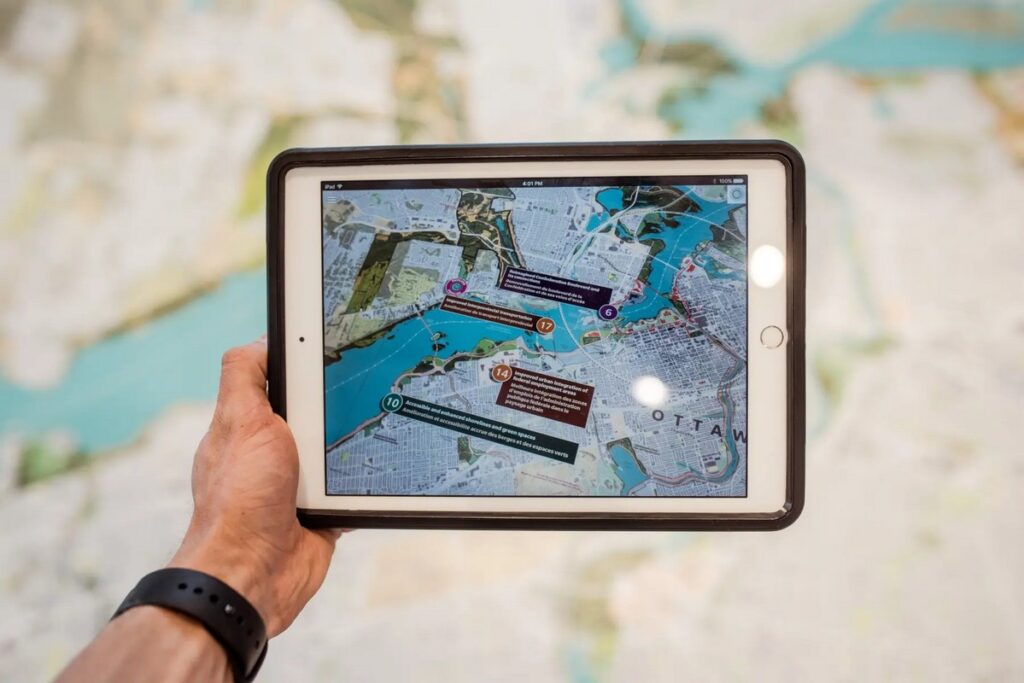
3. Preserving What Matters
Tourism’s success should never come at the cost of the environment. In fragile or overburdened sites, VR offers a viable alternative to physical presence, reducing human impact while still allowing global audiences to appreciate the area’s significance. This is particularly relevant for locations that face increasing wear from over-tourism or reckless behaviour.
AR becomes a tool for real-time education. Whether reminding tourists not to stray off trail or explaining the importance of reef-safe sunscreen, AR-enhanced experiences can quietly promote sustainable behaviour without relying on intrusive signage or constant staff supervision.
4. Empowering Local Communities
With basic digital tools and training, rural communities can create and share their own content like 360° videos of traditional crafts and AR-enhanced local product catalogues. These platforms allow local voices and heritage to reach wider audiences, potentially attracting direct support, bookings, or partnerships from international tourists and cultural institutions.
In this way, AR and VR become vehicles for economic inclusion, letting communities benefit from tourism without needing large-scale development or infrastructure.
5. Navigating Language and Communication Gaps
For many visitors, language barriers can make rural travel daunting. AR apps that offer live translation or context-sensitive explanations can smooth out misunderstandings, improve service experiences, and deepen cultural appreciation. A translated AR overlay on a traditional mural, for example, can make the meaning of indigenous symbols accessible in multiple languages.
6. Smarter, More Personalised Planning
Immersive previews and digital recommendation engines support convenient and informed decision-making. Tourists can use VR tours to plan itineraries, choose accommodation that meets their needs, or discover seasonal events that align with their interests. On-site, AR can offer location-based prompts for nearby attractions or activities that align with their preferences.
Together, these features allow tourists to craft tailored experiences, increasing satisfaction and encouraging repeat visits, which is a key goal for tourism growth.
Who’s Trying It — and How Is It Working?
Sarawak is not waiting on the sidelines in the race to embrace immersive tourism. In recent years, both government agencies and local innovators have begun to harness the potential of immersive technology to elevate the tourism experience while tackling some of the very real limitations of rural and remote travel.
Leading the Charge: The Sarawak Tourism Board
In early 2020, the Sarawak Tourism Board (STB) launched the Sarawak Travel App and Web Portal, a pioneering platform that integrates VR, AR, and 3D modelling to bring the region’s diverse heritage to a global digital audience.
Through the app, users can take 360-degree virtual tours of iconic destinations like the lush caves of Mulu National Park and the cultural performances at Sarawak Cultural Village. By the end of 2022, the app introduced GPS-enabled geofencing features and interactive AR game modules.
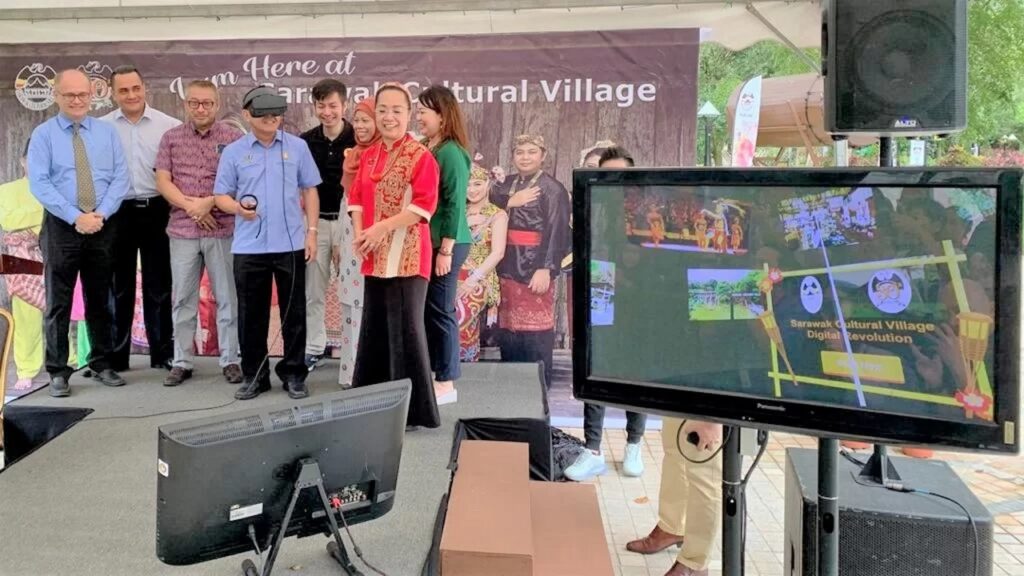
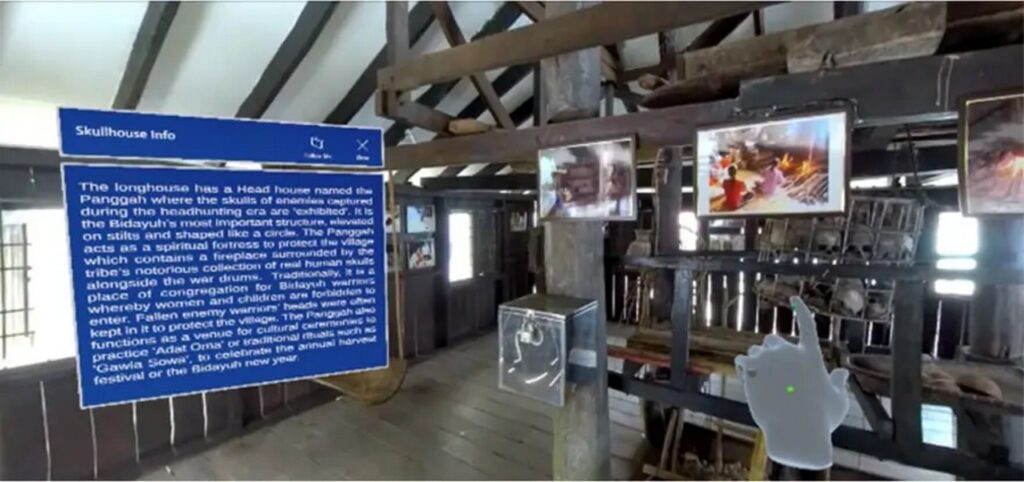
These immersive experiences serve as a personal digital tour guide, delivering historical insights, fun challenges, and location-specific prompts, making exploration more informative and enjoyable without the need for constant human guidance. Such features are especially valuable in less developed rural areas, where interpretive signage or tour operators may be scarce.
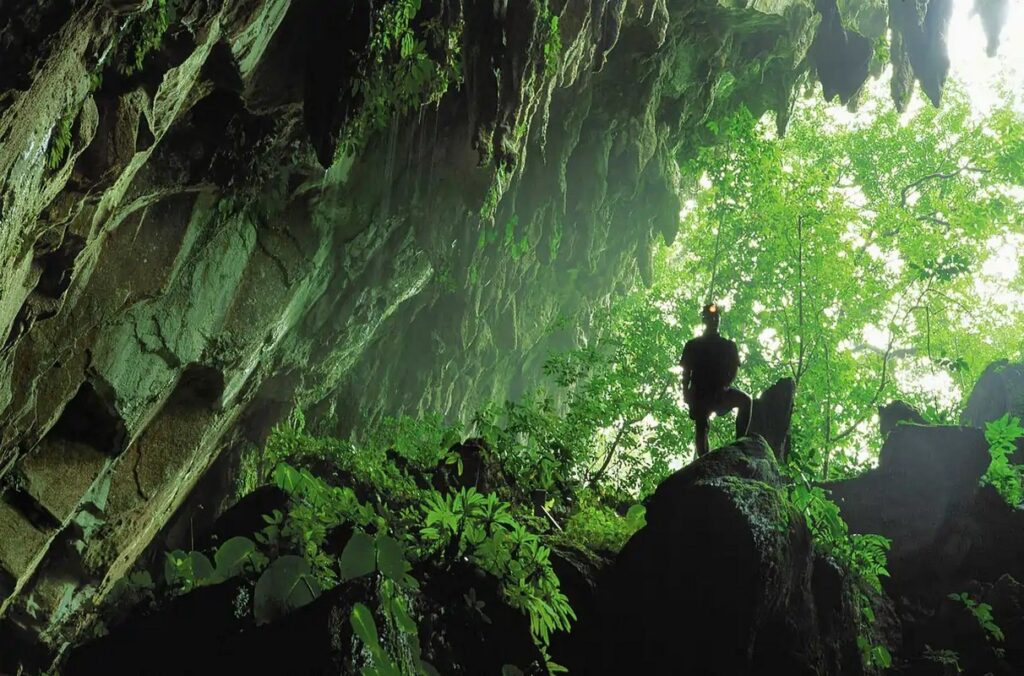
Local Innovators Paving the Way: Not Just a Top-Down Effort
Between 2024 and 2025, MR-based tourism applications were piloted at cultural sites like the Annah Rais Longhouse, allowing users to virtually explore its architecture and traditions. These applications layer cultural storytelling and interactive elements over the physical environment, making cultural learning accessible even to those who cannot be physically present.
Meanwhile, Metadise, a Sarawak-based startup, is making headlines with its project “Tech Me to Sarawak,” an ambitious metaverse experience which digitally recreates Sarawak’s landmarks and cultural activities, offering immersive travel previews designed to blend digital tourism with real-world travel inspiration.
Evidence of Impact: Does Immersive Tourism Work?
The integration of immersive technologies in tourism is producing measurable impact. Across sectors and borders, real-world pilot projects, user feedback, and academic studies provide growing evidence that VR and AR can significantly enhance tourism experiences, participation, and sustainability.
What the Data Shows
Pilot studies and field tests are increasingly validating the promise of immersive tourism tools. In the hospitality industry, research shows that AR and VR experiences during the hotel booking process positively influence customer preferences and increase the likelihood of repeat visits. Tourists who preview hotels and destinations through immersive media tend to feel more confident in their choices and satisfied with their experiences.
For example, DreamCorp’s AR app, built with PTC’s Vuforia Engine, has been used to overlay historical narratives onto real-world heritage sites, transforming static visits into interactive, educational journeys. This approach has been shown to increase visitor engagement and dwell time, two key indicators of satisfaction and value.
Meanwhile, tourism marketing is evolving as well. Studies confirm that virtual travel experiences created through VR significantly boost destination image and travel intent. This makes VR not just a planning aid but a powerful strategic asset for attracting interest in lesser-known or hard-to-reach destinations.
A compelling case comes from Marriott’s “VR Postcards” pilot, where guests received headsets showcasing immersive destination stories. The result? A marked rise in guest satisfaction, emotional connection, and brand loyalty, demonstrating the potential of VR to enhance experience even before a journey begins.
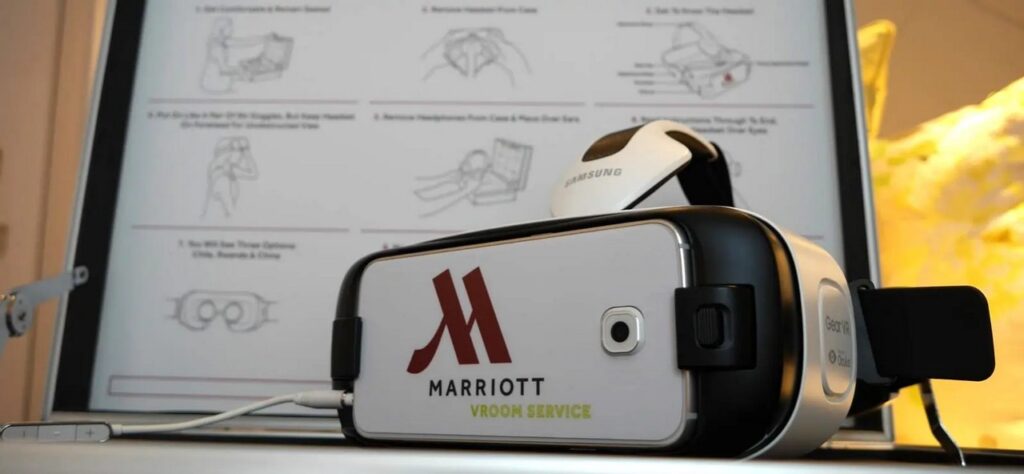
What Tourists Are Saying
User feedback mirrors the findings of formal studies. Tourists who have engaged with immersive VR and AR during their travels consistently report deeper learning and emotional impact compared to traditional guidebooks or signage. Virtual reenactments and interactive overlays help them understand the heritage, environmental context, and local stories in ways that static materials often cannot achieve.
Many visitors, especially those with mobility challenges, budget limitations, or tight schedules, praise VR for offering access where physical travel might be difficult or impossible. For them, VR becomes a tool of equity and inclusion, allowing participation in global tourism from anywhere.
Furthermore, tourists who use VR previews of destinations or accommodations often experience reduced booking anxiety and increased satisfaction. These previews help set realistic expectations while enhancing anticipation. Some report feeling emotionally invested in a destination even before arriving; a sentiment that increases the likelihood of actual visits.
What the Experts Say
Academics and tourism researchers are also weighing in with findings that support the momentum. Multiple studies affirm that the perceived quality of immersive systems, including system stability, content accuracy, and level of interactivity directly affects user satisfaction and continued use.
Experts highlight that high-quality VR and AR content not only boost enjoyment but also serve as practical tools for navigation, exploration, and learning. AR, in particular, is shown to reduce cognitive load by delivering contextual information in real-time, helping tourists make sense of complex environments without overwhelming them.
Moreover, immersive technologies are increasingly recognised as critical tools for inclusive and sustainable tourism. By offering virtual access to fragile or remote sites, they help reduce environmental stress while broadening tourism participation to underserved or underrepresented demographics.
That said, researchers do note areas for further exploration. These include security in wearable VR/AR, the emotional dimensions of virtual experiences, and cross-cultural differences in immersive media response. As the technology evolves, so too must the frameworks for understanding its impact both economically and experientially.
Barriers and Solutions: What’s Holding Back Immersive Tourism in Sarawak?
While the benefits of immersive technologies in tourism are increasingly evident, Sarawak’s path to implementing VR and AR on a wider scale is not without its challenges. A mix of technical, behavioural, cultural, and structural issues must be addressed to ensure these technologies are accessible, engaging, and impactful for both tourists and local communities.
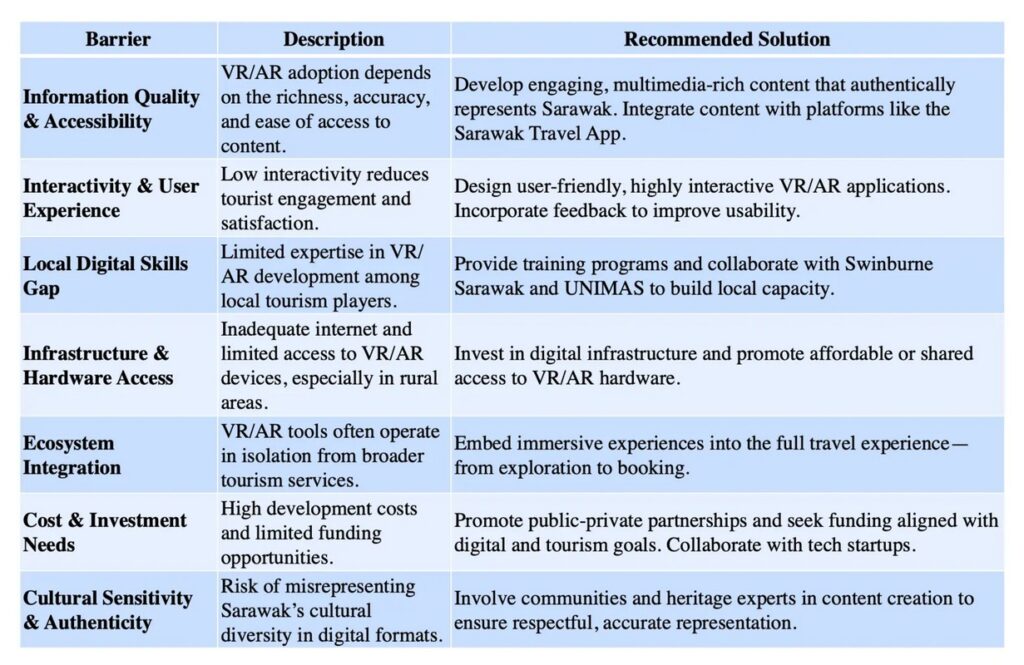
The Key Barriers
- Quality and Accessibility of Content
Tourists are more likely to adopt VR and AR when content is accurate, engaging, and easily accessible. Current limitations in content development, particularly in producing high-quality, immersive narratives about Sarawak’s heritage and nature limit both appeal and effectiveness.
- User Experience and Interactivity
Many VR/AR projects underdeliver on interactivity, a critical factor in user acceptance. When applications lack fluid, intuitive engagement, tourists may find them frustrating or underwhelming, leading to low adoption rates.
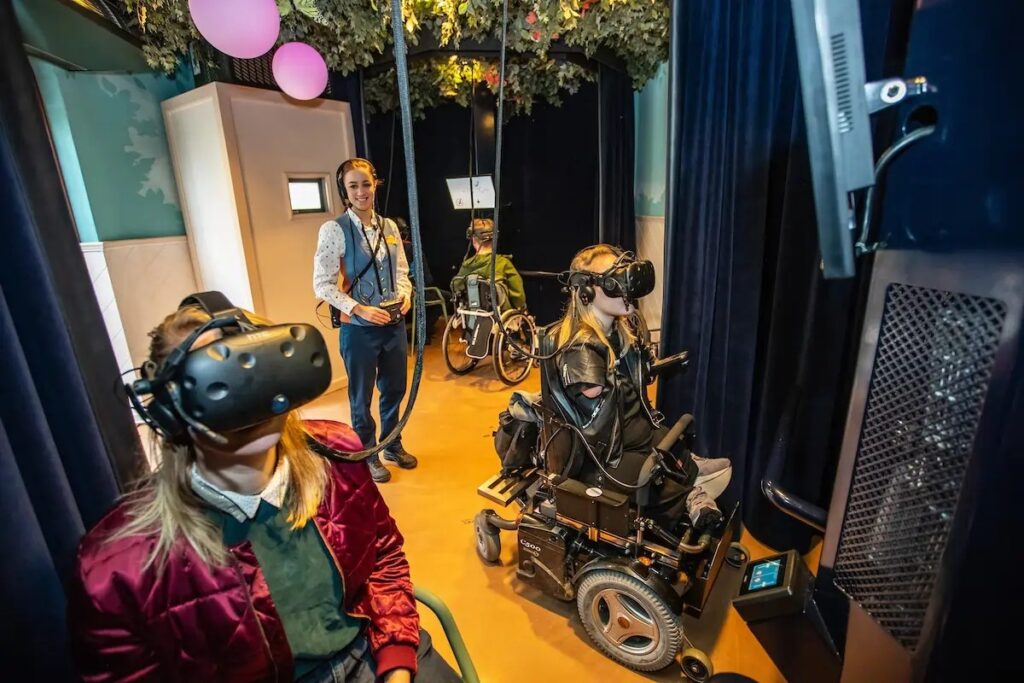
- Local Digital Skills Gap
Sarawak’s tourism operators and content creators often lack training in immersive technologies. Without local capacity to create and maintain VR/AR content, projects risk being outsourced or short-lived, limiting sustainability and cultural authenticity.
- Infrastructure and Hardware Access
Reliable internet connectivity and affordable VR/AR hardware remain inconsistent, especially in rural tourism hotspots. These gaps reduce the feasibility of offering seamless immersive experiences in many parts of the state.
- Ecosystem Integration
Too often, VR/AR tools are treated as add-ons rather than fully integrated into the tourist journey. Without connections to trip planning, booking, or on-site guidance, immersive tools remain isolated and under-utilised.
- Cost and Funding Challenges
Developing rich, functional immersive content is expensive. Many potential developers struggle to secure funding or long-term investment to support development, testing, and maintenance.
- Cultural Sensitivity and Authenticity
Misrepresentation or oversimplification of Sarawak’s diverse cultural heritage in VR/AR content risks alienating communities and tourists alike. Ensuring authentic and respectful storytelling is a critical, yet complex, challenge.
- User Behaviour and Perception
Behavioural studies show that tourist adoption depends on perceived usefulness, enjoyment, and ease of use. Without thoughtful design and targeted marketing, immersive tourism may not reach its intended audiences.
Strategies to Move Forward
Thankfully, each of these barriers can be addressed through targeted strategies that combine investment, innovation, and community involvement:
- Enrich VR/AR Content and Access
Prioritise the development of authentic, multimedia-rich VR/AR experiences that showcase Sarawak’s cultural and natural assets. Make them accessible through platforms like the Sarawak Travel App, linking immersive previews directly to booking and planning tools.
- Develop Local Skills and Innovation Capacity
Partner with institutions such as Swinburne Sarawak and UNIMAS to offer training programs and incubators that empower local stakeholders to develop, operate, and innovate in immersive tourism technologies.
- Strengthen Digital Infrastructure and Equipment Access
Invest in rural internet connectivity and facilitate access to affordable or shared VR/AR hardware for both businesses and visitors. Infrastructure upgrades are essential to bring immersive tourism into underdeveloped areas.
- Integrate VR/AR into the Tourism Journey
Embed immersive experiences into the full tourism lifecycle—from pre-trip inspiration to post-visit engagement. For instance, use VR for destination previews, AR for real-time on-site interpretation, and interactive storytelling for post-visit memory sharing.
- Secure Funding and Foster Partnerships
Encourage public-private partnerships aligned with Sarawak’s digital economy goals. Work with tech startups, government agencies, and international tourism funds to ensure immersive projects have the capital to grow and evolve.
- Ensure Cultural Integrity and Inclusiveness
Involve local communities, cultural custodians, and heritage experts in content creation. This ensures authenticity and helps distribute the economic benefits of tourism innovation more equitably.
- Design for Usability and Appeal
Focus on creating experiences that are visually appealing, highly interactive, and easy to use. Consider the needs of different traveller segments and gather regular feedback to improve the experience.
- Promote Awareness and Curiosity
Market immersive tourism experiences as core features of Sarawak’s tourism brand, not just novelties. Use social media, online travel platforms, and targeted campaigns to highlight the uniqueness and excitement of VR/AR-based exploration.
Conclusion: From Novelty to Necessity – Embracing Immersive Tourism in Sarawak
Immersive technologies are fast becoming strategic tools in modern tourism. In Sarawak, this digital shift is already underway. With pioneering platforms like the Sarawak Travel App, growing involvement from local startups, and enthusiastic support from state leadership, immersive tourism is proving its value in showcasing Sarawak’s rich heritage, diverse cultures, and natural wonders to global audiences.
Evidence from global and regional counterparts demonstrates how VR/AR can increase tourist engagement, support accessibility, and boost destination marketing. Likewise, early feedback from tourists using immersive experiences affirms that such tools enhance learning, emotional connection, and travel confidence. Research further underscores their role in shaping destination image and travel intention, while promoting inclusivity for those with physical or financial constraints.
Yet, realising the full potential of immersive tourism in Sarawak will depend on addressing several foundational challenges. From improving content quality and infrastructure to building local technical capacity and ensuring cultural authenticity, each barrier presents a corresponding opportunity for strategic action. The path forward lies in investing in human capital, forging cross-sector partnerships, and embedding VR/AR into the broader tourism ecosystem.
In this transformation, immersive technologies are one of the bridges that connect visitors more meaningfully to Sarawak’s identity and values. As the state continues to position itself as a leader in digital innovation, immersive tourism offers a promise to tell Sarawak’s story in deeper, more dynamic ways, and to invite the world to explore it, virtually and physically.
References:
- Poor infrastructure hampers rural tourism
- [PDF] Rural tourism destination competitiveness of Kubah National Park in …
- Pustaka e-KNOWBASE — Rural Tourism Issues and Challenges
- Accessible Tourism – UN Tourism
- 400,531 tourists, RM1bil in tourism receipts recorded in Jan
- A rural tourism promotion mechanism based on virtual reality technology for real-time interactive experience
- AR/VR in Tourism and Hotel Industry
- Virtual Reality Application in Rural Tourism Experience: Influence of Authenticity and Tourist Satisfaction
- 5 Ways Augmented Reality is Enhancing the Tourism Experience
- Sarawak tourism takes next step in digitalisation with Sarawak Travel App, web portal
- Interactive travel app, Sarawak Travel Portal and App updated with VR, AR
- Mixed Reality Application for Virtual Tourism: Annah Rais Longhouse
- Augmented and virtual reality in hotels: Impact on tourist satisfaction and intention to stay and return
- Exploring Augmented Reality in Tourism and Travel: A Journey into Immersive Experiences
- DreamCorp reimagines how tourists engage with historical sites using Augmented Reality
- Virtual reality in tourism: The impact of virtual experiences and destination image on the travel intention
- Leveraging Virtual Reality Experiences to Shape Tourists’ Behavioral Intentions: The Mediating Roles of Enjoyment and Immersion
- A systematic review of virtual reality in tourism and hospitality: The known and the paths to follow
- Using Augmented Reality to Improve Touristic Efficacy
- Applying virtual reality and augmented reality to the tourism experience: a comparative literature review
- Understanding the core technological features of virtual and augmented reality in tourism: a qualitative and quantitative review
- The behavioral intention of young travelers to use virtual reality technology in cultural tourism destinations: An application of technology acceptance model
- INTENTION TO USE VIRTUAL REALITY IN SARAWAK TOURISM DESTINATIONS: A TEST OF STIMULUS-ORGANISM-RESPONSE (S-O-R) MODEL
- Manpower and Tourism Industry: Challenges and Recommendations
- A Case Study Of The Sarawak Cultural Village (Scv) Application: An Evaluation Of User Perception Of Scv Application
